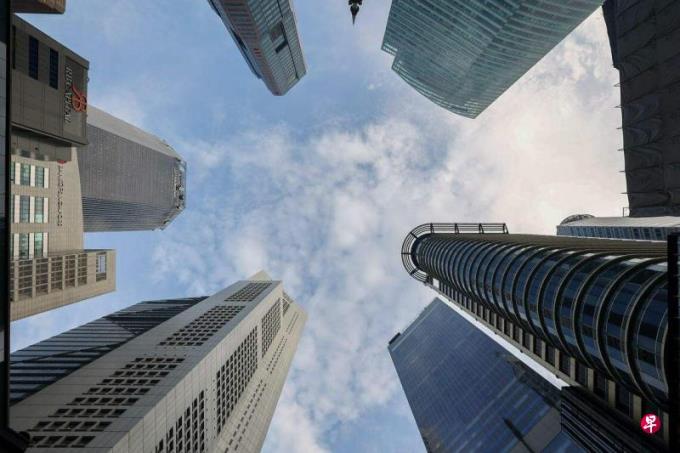
The macroeconomic assessment report released by the Singapore Financial Authority pointed out that in the past 10 years (2012 to 2022), the nominal wages of middle -income employees have increased by 42%, and the 36%increase in high and low -income people has increased.EssenceHowever, it warns that the economic growth of the next stage will slow down, the wages of secondary income employees will face the challenges of population constraints and technological development and changes.
The HKMA is divided into 10 groups according to the average monthly salary of the local employee, from 20%of the lowest income (first and second "very position group") to 20%of the highest income (ninth and the first and second.Ten "Shifen Groups), the third to eighth in the middle is the middle income group, or the middle class commonly known as the middle class.
According to the report, 23%of secondary income employees have increased by two or more within 10 years due to wage growth, and the other 22%climbed to the level.In addition, about 20%of employees stay at the original level, while the remaining 35%of the employees fell one or two or more.This reflects that in the past 10 years, the social flow of the middle class in Singapore is smooth, and the ratio of upward flow to the downward flow is basically the same.
The analysis of the HKMA found that the social flow of secondary income employees is closely related to the size of the enterprise and the income of employees.Employees with higher productivity or larger enterprises have doubled their income within 10 years, and employees who stay in lower productivity or smaller companies have only increased by about 50%.In addition, among the employees holding a diploma in 2011, 20%of employees who have obtained a higher education in the next 10 years and improved education levels have a higher average income growth.
Social flows are up and down. During the take -off period, social flows are more vibrant and healthy; but at the stage of economic maturity, social flow will slow down or even rigid.The above report shows that about 15%of the middle class revenue fell by level, and about 20%of the other fell two or more.However, the report did not explain the reasons for the decline in the flow of middle class society, nor did they point out that this group of employees belong to the middle and lower class or middle and upper class.
To maintain the prosperity of the economy and the stability of society, it is important to ensure that the smoothness of social flow channels is essential.Otherwise, the public does not have hope for the future of themselves and the next generation.However, in the next stage, to maintain the social liquidity of the economic take -off, it will face many challenges.
Singapore's economy has increased by 3.7%in the past 10 years, lower than 5.9%in the previous 10 years.Due to the low population growth and aging, Singapore's economic growth in the next stage will slow down.The slowdown of the expansion of economic cakes means that the opportunity for social flow is reduced.
Secondly, the changes in science and technology have completely changed the needs and landscapes of the workplace.The development of generating artificial intelligence technology may eliminate many tasks. The most affected is PMET (professionals, managers, executives and technicians) with secondary income.In fact, many PMETs have been tailored or faced with the doom of layoffs.Among them, there are many jobs that cannot find the same salary after losing their jobs.This may be one of the reasons why the 35%of the 35%of the employee revenue was downgraded.
Financial Management Bureau emphasized that PMET needs to improve skills to meet the latest needs of the workplace.Transformation is a process of pain in enterprises and individuals.Local middle -income people are aged 25 to 49, and most of them must take into account their families and careers. There are not much time to improve their skills.Therefore, it is necessary for enterprises to create favorable conditions for the training of employees, and employees must also have a stronger sense of crisis to have the opportunity to increase the ladder of social flow.
Singapore actively creates a tolerance society and supports low -income groups.The National Wage Council announced the latest salary guidance principles on Tuesday (October 31). It is recommended to be 20%of the lowest income group, with a salary increase of at least 85 yuan to 105 yuan, or 5.5%to 7.5%.EssenceWhen maintaining a healthy social flow, ensuring the rise of the water and the increase in overall revenue of the nationals, it may be better to ensure the interests of low -income groups.
The middle class is insufficient, more than below.In the period of economic take -off, their income and social status are also the driving force for economic development.However, the income gap and the slowdown of economic growth may hinder social liquidity and make people lose their minds.The high inflation is high, which has also stressed the middle -class lifestyle and is anxious about the future of yourself and children.
The multinational research of economic cooperation and development organizations shows that countries with higher income growth and employment prospects, the stronger economic growth.In addition, strong and rich middle class can strengthen social cohesion and political stability.However, the middle class of the developed economies is shrinking and caused social anxiety and extraordinarily psychology.Therefore, the social mobility of Singapore's middle class is worthy of deeper discussion.


